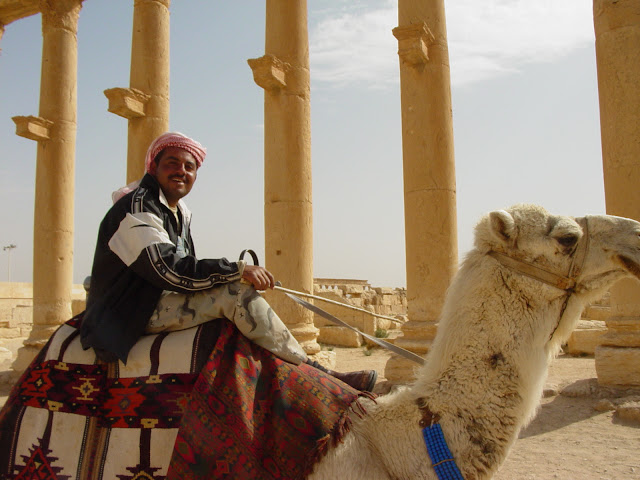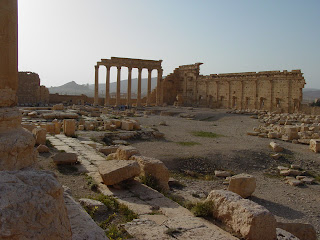 Called Tadmor (its ancient Semitic name) by the locals, it is an impressive site, not only in its completeness. The colonnades, ruins, mosaics, carvings, and temples are superb.
Called Tadmor (its ancient Semitic name) by the locals, it is an impressive site, not only in its completeness. The colonnades, ruins, mosaics, carvings, and temples are superb.Dating back to around the 2nd millenium AD, but with the majority of the ruins being from the 2nd century AD, its location was incomparable on the traveller's path, with caravans stopping here en route between Mesopotamia, Arabia and Egypt.
A scandalous story of murder and betrayal is told about Odainat (commander of the Roman forces) and his wife Zenobia. After his assassination (perhaps at her hands) she took control of the entire region in the name of her son, declaring him emperor, with a strong if doomed show of power, which ultimately helped contribute to Palmyra's downfall.
There are many important buildings: the Temple of Bel, the Nabo Temple, Diocletian's Baths, a theatre, the much-photographed Tetrapylon (four sets of standing columns, but sadly mostly made of concrete), the Agora courtyard, the Temple of Baan Shamin, and of course the impressive colonnaded row.
The Valley of the Tombs is separate from the main site. The view from the Qala'at ibn Maan (the Arab castle) on the top of the hill is incredible, particularly at sunset!
Source: Lonely Planet Syria and Lebanon 2nd Edition











No comments:
Post a Comment